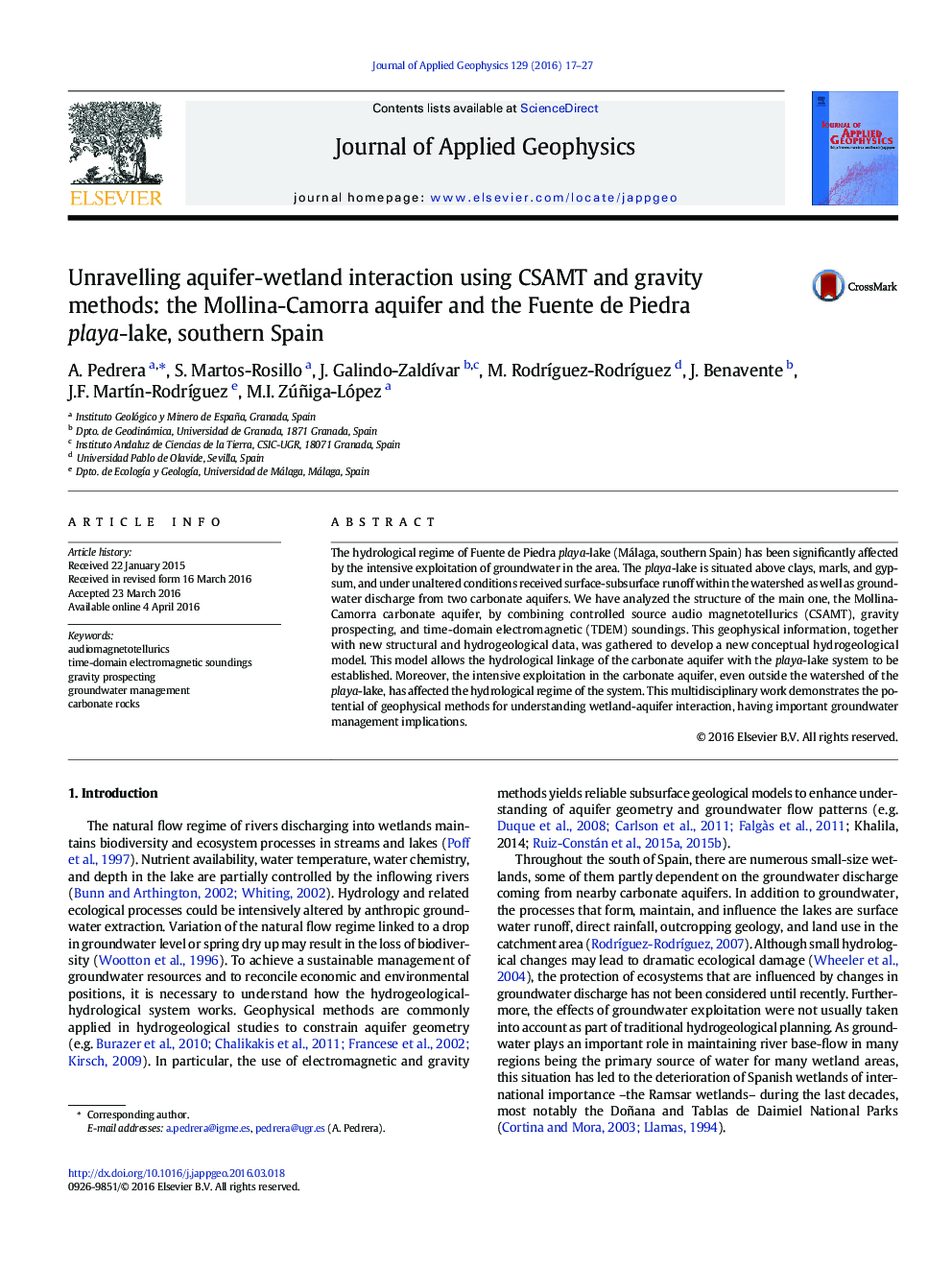| Article ID | Journal | Published Year | Pages | File Type |
|---|---|---|---|---|
| 4739825 | Journal of Applied Geophysics | 2016 | 11 Pages |
•The structure of a carbonate aquifer is established by electromagnetic and gravity methods•Hydrological linkage between the carbonate aquifer and a wetland is recognized•Groundwater exploitation affected the playa-lake, even outside of the watershed
The hydrological regime of Fuente de Piedra playa-lake (Málaga, southern Spain) has been significantly affected by the intensive exploitation of groundwater in the area. The playa-lake is situated above clays, marls, and gypsum, and under unaltered conditions received surface-subsurface runoff within the watershed as well as groundwater discharge from two carbonate aquifers. We have analyzed the structure of the main one, the Mollina-Camorra carbonate aquifer, by combining controlled source audio magnetotellurics (CSAMT), gravity prospecting, and time-domain electromagnetic (TDEM) soundings. This geophysical information, together with new structural and hydrogeological data, was gathered to develop a new conceptual hydrogeological model. This model allows the hydrological linkage of the carbonate aquifer with the playa-lake system to be established. Moreover, the intensive exploitation in the carbonate aquifer, even outside the watershed of the playa-lake, has affected the hydrological regime of the system. This multidisciplinary work demonstrates the potential of geophysical methods for understanding wetland-aquifer interaction, having important groundwater management implications.
